Syn.: Agave palmeri var. chrysantha (Peebles) Little, Agave palmeri subsp. chrysantha (Peebles) B. Ullrich
Family: Asparagaceae Juss.
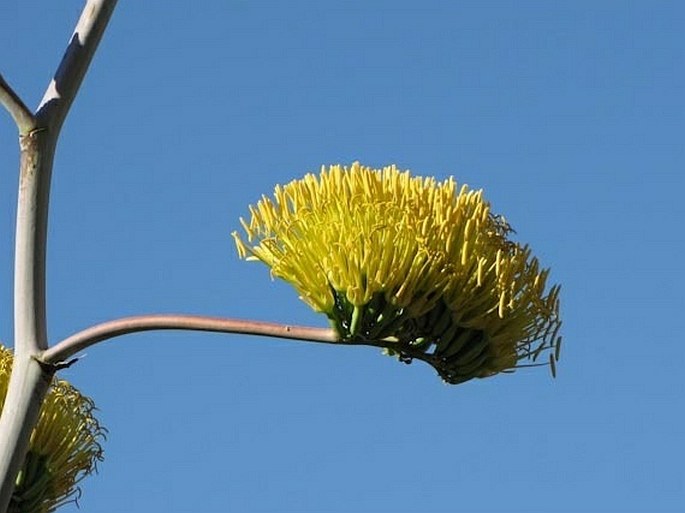
Distribution: Endemic to Sonora desert in Arizona only.
Ecology: Mountain foothills and canyons in desert scrub. In sandy soil or volcanic soil in elevation 700 to 2100 m. Flowers in late spring to summer.
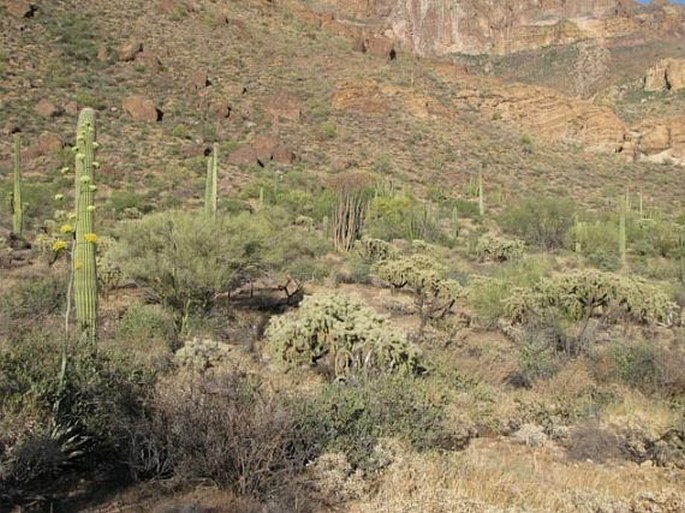
Description: A monocarpic plant, acaulescent, occasionally suckering, rosettes usually solitary, leaf rosette to 90 cm tall, flower stalk to 6 m tall. The leaves are in a basal rosette and are stiff, green and taper to a pointed tip. The leaves have a stout, sharp spine at the tip and sharp spines along the leaf margins. Colour is yellowish green to green and the surface is glaucous. Inflorescence is broadly paniculate, bracts persistent, triangular; flowers in clusters, 12 to 20 in number, erect, tubular, campanulate, 3.5–6.5 cm in length, perianth golden yellow. Fruit is a capsule, oblong or obovoid, about 5 cm large, seed 6–7 mm.
Threat and Protection: Protected plant in Arizona.
Notes: As most agaves, the plant after flowering and setting seed dies.
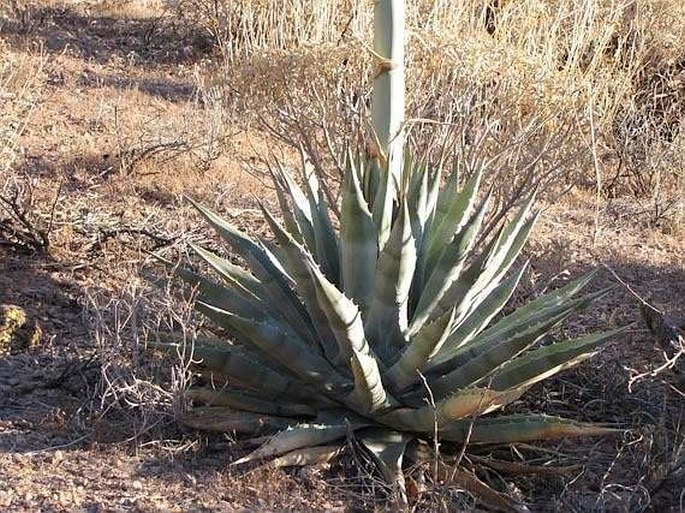
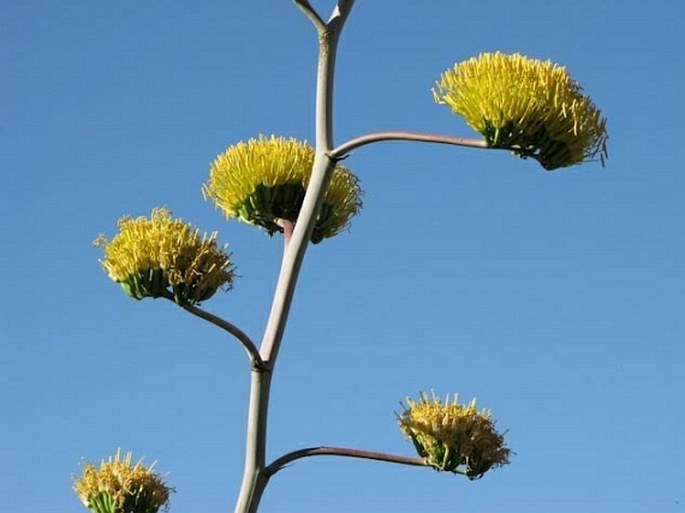
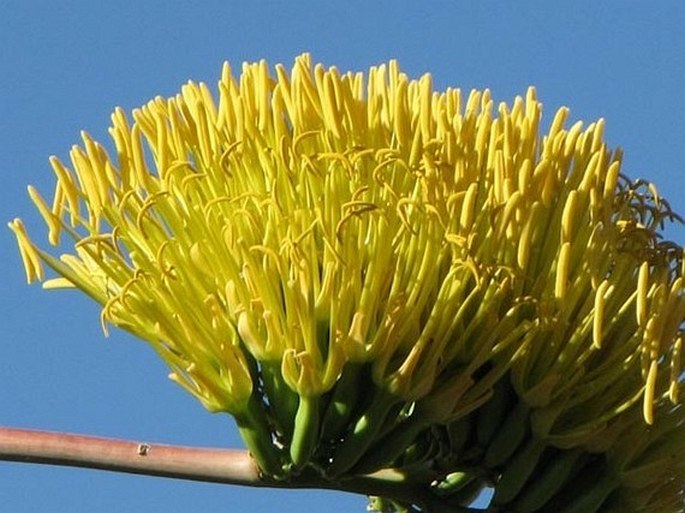
These images were taken in USA, Arizona, Organ Pipe Cactus National Monument, Ajo Mtn. foothills (May 2009).


